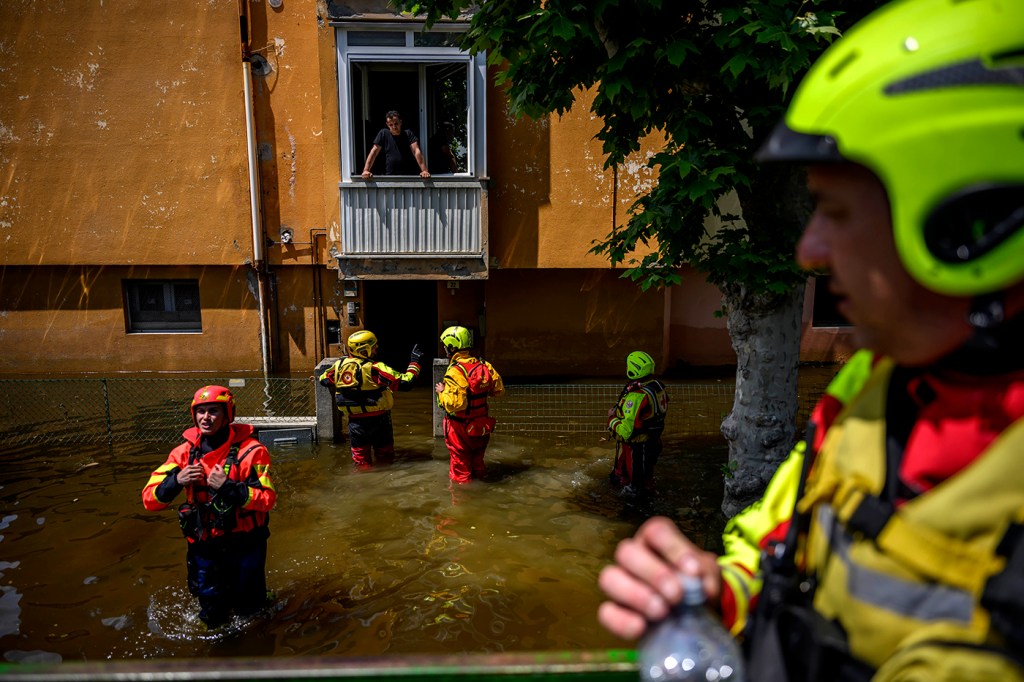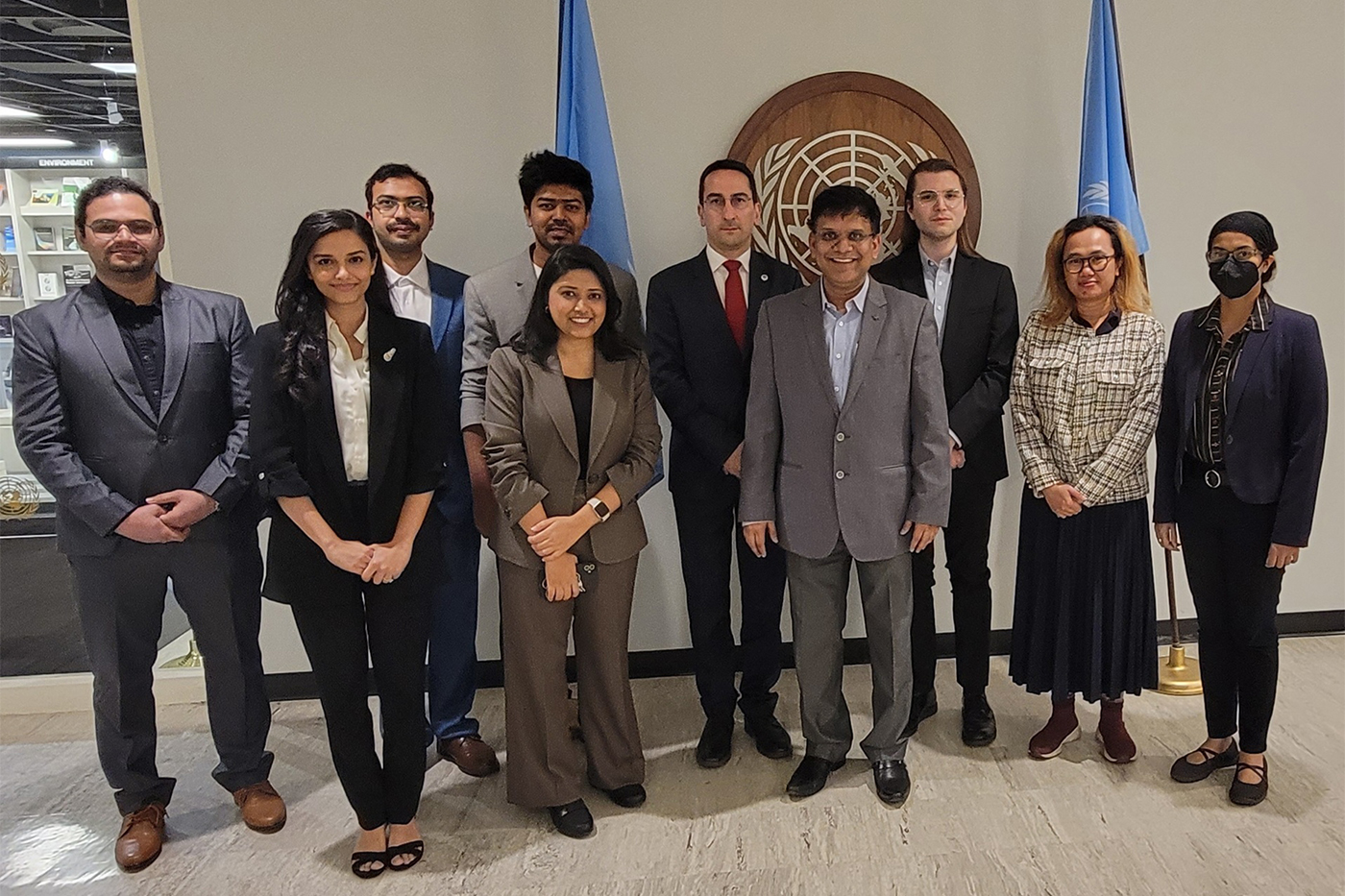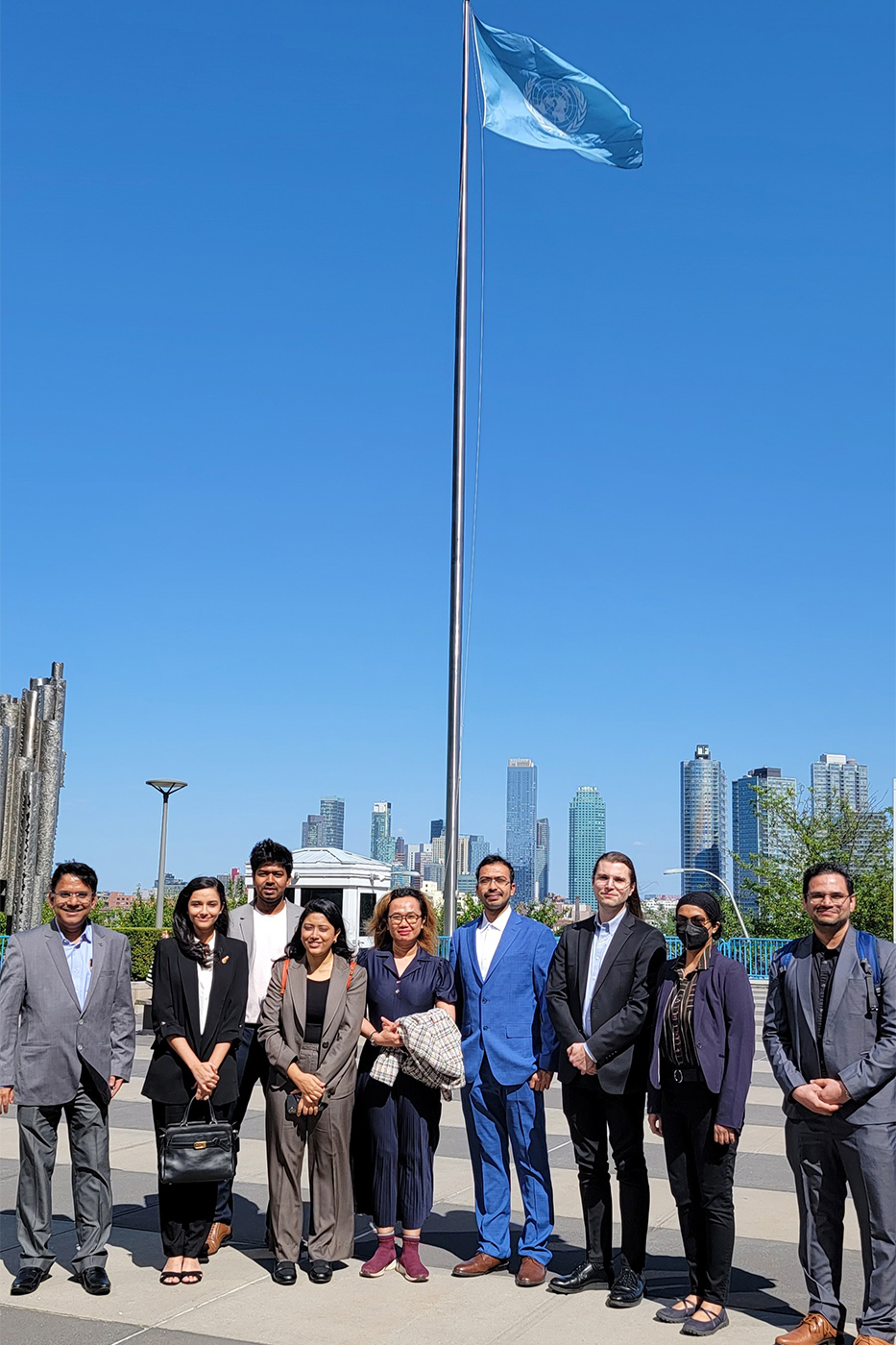Can AI help reduce the risk of climate change disasters?

Catastrophic floods in Italy and recent deluges in south Florida, Appalachia and California are hard proof that it’s not just developing nations that are unprepared to deal with the impact of climate change.
Auroop Ganguly, Northeastern distinguished professor of civil and environmental engineering, traveled to the United Nations in New York recently with a group of eight students and researchers to address gaps in the field of disaster risk reduction—and possible ways to mend them.
Upon his return, Ganguly spoke to Northeastern Global News about the complexities of building resilience at the local and global levels, what has worked so far—and why

Northeastern is well positioned to come up with socially impactful solutions.
Reducing the risk of disastrous events in a time of extreme weather events, outdated infrastructure, vulnerable social networks and varying degrees of government responsiveness poses one of the biggest challenges facing mankind.
“We call this the convergence of complexities in climate resilience,” says Ganguly, who presented a short opening comment and a detailed statement on the topic at a Risk Reduction Hub event May 17 at U.N. headquarters—one day before a review of the historic 2015 Sendai Agreement.

One big issue is a gap in data that can inform engineering, civil infrastructure and hydrological responses, Ganguly says.
The Data Gap
Satellites and other sensors have accumulated an immense amount of “big data” from across the globe, but data from more localized sensors in urban areas “are relatively small,” he says.
And yet this data is critically important for understanding how extreme weather events and other disasters may impact an area’s roads, buildings, bridges and disaster response services.
Also missing is historical, pre-satellite information that can help with understanding climate trends, Ganguly says.
“If you go sufficiently back in time, you have almost nothing, other than for proxies,” he says.
Ganguly says he knows of a fellow graduate student and her adviser who went to Egypt and found that the pharaohs kept records of the Nile River flow for centuries, but that was an exception to the historical record.
Another issue is that traditional models of earth and infrastructure and social systems are often based on imperfect physics and were usually developed when the world was data poor compared to now, Ganguly says.
Northeastern leader in hybrid physics AI
“We don’t want to throw everything out and say, ‘That doesn’t solve the problem,’ because the process knowledge and human intelligence built over the decades and even centuries are still very useful,” says Ganguly, who participated in the U.N. roundtable discussions with eight students and researchers from the Sustainability and Data Sciences Lab he directs at Northeastern.
“At the same time, we don’t want to keep our models hostage” to a period of time that had less data than what is available now, he says.
One of the solutions is to develop a hybrid physics AI modeling approach that incorporates artificial intelligence, machine learning, nonlinear dynamics and extreme value theory with model simulations based on physics, biogeochemistry, engineering and social principles “as appropriate and applicable,” Ganguly told NGN.
He says Northeastern is well positioned to engage in this type of hybrid research because the university has developed a culture of building interdisciplinary solutions—often together with industry, government, and entrepreneurial partners—by developing cross-expertise in AI, earth sciences and engineering.
“We cannot solve the grand challenges of the 21st and 22nd centuries and beyond by staying within traditional disciplinary silos,” Ganguly says.
What’s working
While the challenges presented by a rapidly warming planet may seem overwhelming, doing nothing is not an option, at the local, national or U.N. global level, says Ganguly, co-author of the textbook, “Critical Infrastructures Resilience.”
“We cannot let the uncertainty become an excuse for inaction or fatalism,” he says.
“There are things you can do within a region, within a country, to make your infrastructure stronger, to make your communities more resilient.”
Ganguly, who co-directs the Global Resilience Institute as well as directing a climate and sustainability focus area within the Institute for the Institute for Experiential AI, points to how India saved an estimated 1 million people in one of its poorest areas from a devastating cyclone in 2019 with a plan that employed text messaging, police, buses, sirens and volunteers to evacuate people to simply built shelters.
He says researchers trained at Northeastern have spun off starter companies addressing some of the big challenges of AI and climate change, such as weather forecaster, Zeus AI, started by former students Thomas Vandal and Kate Duffy, and urban climate resilience builder, risQ, by former student Evan Kodra, recently acquired by Fortune 500 company Intercontinental Exchange.
One of his Ph.D. students, Puja Das, presented a case study at the U.N. about using a NASA grant to develop short-term precipitation forecasting using AI and remote sensing technology.
The goal is to improve emergency management and power preparedness in the Appalachian Valley, but the information could also be customized for flood-prone areas of Bangladesh and Indonesia, Das said in her report.
In addition to Das, the SDS Lab students and researchers who accompanied Ganguly to the United Nations are: Dian Indrawati, Rachindra Mawalagedara, Aayushi Mishra, Ashis Pal, Arnob Ray, Rishi Sahastrabuddhe, and Jack Watson.
Cynthia McCormick Hibbert is a Northeastern Global News reporter. Email her at c.hibbert@northeastern.edu or contact her on Twitter @HibbertCynthia.





